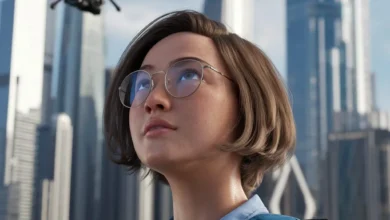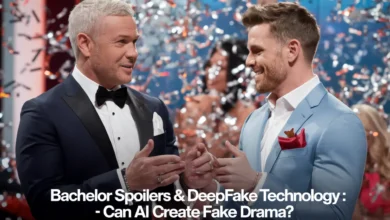Celebrity Deepfakes: Rise of AI Fakery and Race for Deepfake Detection

With the era of the artificial intelligence, the distinction between reality and fiction is becoming more and more blurred. Among the most impressive instances of that is the celebrity deepfakes, which is hyper-realistic videos or pictures based on AI that apply the digital technology to overlay a celebrity on another individual, be it a face or a voice. Such digital manipulations can be in many cases barely distinguishable as the original content. Which raises a great concern regarding the issues of privacy, misinformation, and the future of the media integrity.
What are Deepfakes of Celebrities?
Celebrity deepfakes are artificial media developed with deep learning methods, in particular, Generative Adversarial Networks (GANs). These applications enable AI models to imitate the facial expressions, speech patterns and body movements of celebrities with creepy precision.
Initially, most of these works were perceived as pure harmless entertainment Tom Cruise performing magic tricks on Tik Tok or Morgan Freeman giving out a speech that he never made. However, along with the technological development, the possible threats also increase.
The Dark Side of the Deepfakes Fame.
Some deepfakes are made to entertain or to give a satirical purpose, but some are done with more sinister intentions. False interviews, pornographic scenes with celebrities, and politically driven videos can go viral in social media causing reputational losses and people being confused.
There are also several serious legal and ethical concerns about unauthorized use of likeness of a celebrity. Who possesses your online personality? Is it possible to steal your fame with AI- or your credibility?
The importance of Deepfake Detection.
The harder it becomes to detect deepfakes, the better the quality of deepfakes becomes. Here, the technology of deepfake detection is needed. The level of competition is now increasing with researchers and technology firms competing to produce tools that can help identify AI-generated content before it goes viral.
Approaches that are used in detecting deepfakes include:
AI review of the discrepancies in lighting, eye movements or shadows on the faces.
Checking of authentic media by blockchain.
Watermarking Watermarking technologies used to indicate that a content has been modified.
In spite of such improvements, this remains a game of cat and mouse. With the improvement of detection tools, the fakes also improve.
The Social Media Platforms Role.
Social media, such as YouTube, Tik Tok, and Instagram, are now being pressured to provide more effective deepfake detection. There are those who have come up with new content policies and others are investing in collaboration with AI firms to enhance detection and labeling of manipulated content.
Nevertheless, the implementation is still not renewed and lots of deepfakes are still spread without any preprocessing or background.
Celebrity Deepfakes and the general Public.
The problem of deepfakes of celebrities is not only Hollywood. It is an indication of how AI can warp reality to anybody. With further proliferation of these technologies, we might witness ordinary people being targeted by deepfakes manipulation to be bullied, defrauded, or misinformed.
This is the reason why a mix of legal regulations, technological applications, and community education is required. Digital literacy campaigns to raise awareness about deepfakes should be included in the curriculum, and celebrities might have to take a proactive action to protect their image.
Final Thoughts
Celebrity deepfakes are a great example of what AI-generated content might become to come to fruition- but it is also a caution. The more the technology is powerful, the more it can be abused. The good news? The battle against digital deception and the preservation of the integrity of information space with an appropriate investment in the detection of deepfakes is not insoluble.




